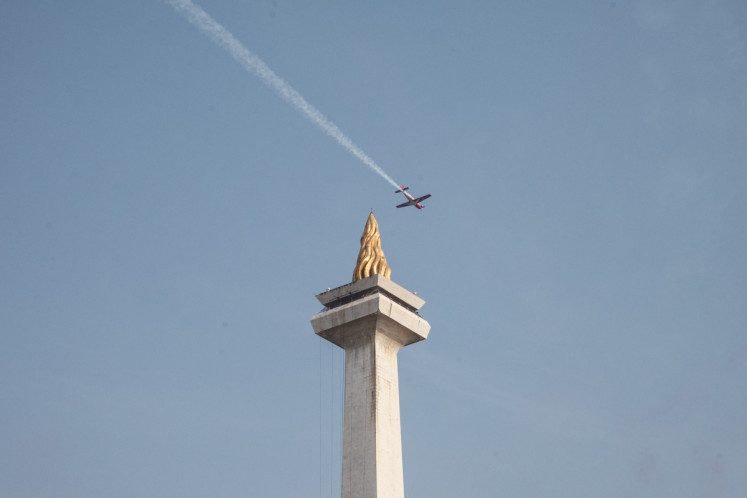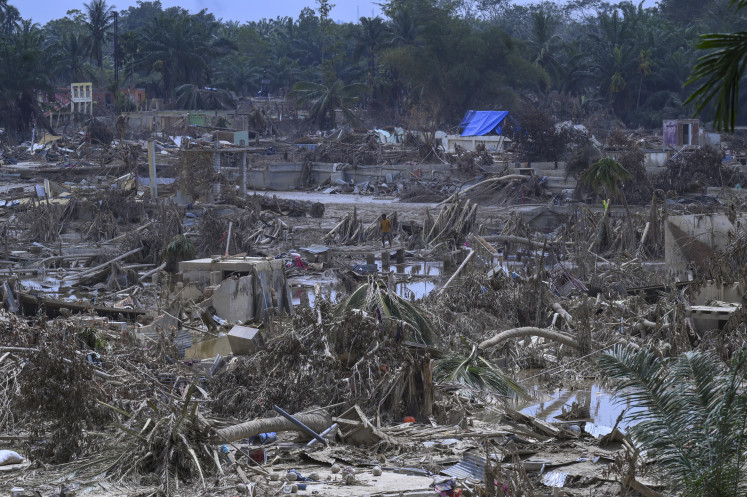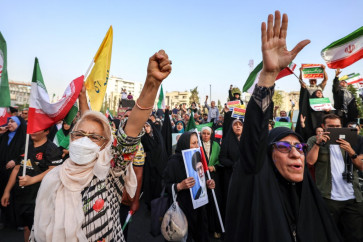Popular Reads
Top Results
Can't find what you're looking for?
View all search resultsPopular Reads
Top Results
Can't find what you're looking for?
View all search resultsWhat Indonesia can learn from the Iran–Israel war
While Indonesia currently maintains peaceful relations with all nations, the classic Latin adage Si vis pacem, para bellum (If you want peace, prepare for war) must remain a guiding principle.
Change text size
Gift Premium Articles
to Anyone
 Iranians chant slogans and wave national flags as they celebrate a ceasefire between Iran and Israel at Enghlab Square in Tehran on June 24. A fragile ceasefire in the Iran-Israel war appeared to be holding on June 24, after 12 days of strikes that saw Israel and the United States pummel the Islamic republic's nuclear facilities. (AFP/Atta Kenare)
Iranians chant slogans and wave national flags as they celebrate a ceasefire between Iran and Israel at Enghlab Square in Tehran on June 24. A fragile ceasefire in the Iran-Israel war appeared to be holding on June 24, after 12 days of strikes that saw Israel and the United States pummel the Islamic republic's nuclear facilities. (AFP/Atta Kenare)
A
fter 12 days, the war between Iran and Israel ended in a ceasefire, not a peace agreement, on June 24. Both militaries will remain on high alert for an indefinite period. Given the long and bitter history of hostilities between the two nations, lasting peace remains a distant prospect. The ceasefire could collapse at any time, potentially triggering a renewed and even more devastating conflict.
From the Iran-Israel conflict, which also saw the involvement of the United States in its final days, there are valuable lessons to learn, especially regarding national air defense systems. Throughout the conflict, Iran's air defense system was repeatedly breached by Israeli and American fighter jets with little to no effective resistance from Iran’s air force.
Notably, the war saw neither dogfights nor ground battles involving infantry, armored units or artillery to seize enemy positions. Likewise, no amphibious landings or naval engagements occurred, in contrast to what is typically seen in wars between states.
Israel's objective in attacking Iran was not to occupy territory, as it did in Gaza, but to destroy Iran’s nuclear facilities at Fordow, Natanz and Isfahan, and to overthrow Supreme Leader Ayatollah Ali Khamenei. US President Donald Trump went so far as to threaten Khamenei’s elimination, a claim that was never substantiated.
The US, which supported Israel during the conflict, also carried out airstrikes targeting the same three nuclear sites that Israeli forces failed to neutralize. However, unlike in previous wars in Iraq, Vietnam or Afghanistan, the US did not deploy ground troops. This conflict marked a shift toward 21st-century warfare, one dominated by airstrikes, drones and long-range missiles.
Two key takeaways from the Iran-Israel conflict stand out: The vulnerability of Iran’s air defense system and the limited success of Israel’s strategic goals. Israel’s dual objectives, to dismantle Iran’s nuclear facilities and remove Ayatollah Khamenei from power, were not fully achieved. Although President Trump claimed the nuclear facilities had been destroyed, Khamenei denied this. The International Atomic Energy Agency (IAEA) also reported no increase in nuclear radiation at the three targeted sites due to Israeli and US air strikes.
One of the most critical lessons is that modern warfare today is dominated by advanced technology in the form of missiles, drones and stealth aircraft. High-tech attacks must be countered by equally sophisticated air defense systems capable of detecting and intercepting enemy aircraft, missiles and drones.
Your Opinion Matters
Share your experiences, suggestions, and any issues you've encountered on The Jakarta Post. We're here to listen.
Thank you
Thank you for sharing your thoughts. We appreciate your feedback.


















